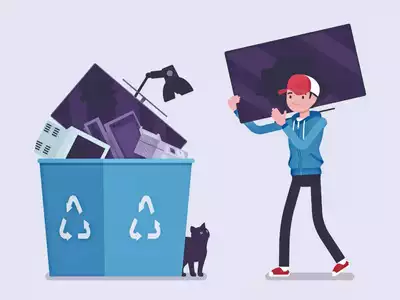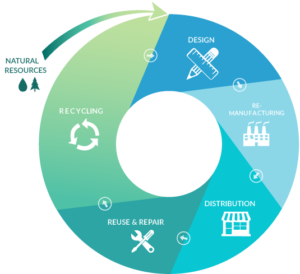

Electronic waste, commonly referred to as e-waste, encompasses discarded electronic devices and equipment, including computers, laptops, smartphones, tablets, printers, televisions, and other electronic gadgets. With the rapid advancement of technology and shorter product lifecycles, the generation of e-waste has become a significant environmental and health concern globally.

E-waste services in the realm of information technology (IT) refer to initiatives aimed at responsibly managing electronic waste generated from IT equipment, such as computers, laptops, smartphones, tablets, printers, and other electronic devices. E-waste, or electronic waste, presents environmental and health hazards due to the presence of toxic materials like lead, mercury, cadmium, and brominated flame retardants.

Many governments, organizations, and companies have established collection and recycling programs to encourage proper disposal of e-waste. These programs often involve designated drop-off locations, periodic collection events, or partnerships with recycling facilities.

E-waste services advocate eco-friendly disposal methods like recycling, refurbishment, and responsible disposal to minimize pollution and conserve resources. Recycling e-waste recovers metals, plastics, and glass for new product manufacturing.

E-waste services often include awareness and education campaigns to inform the public about the importance of proper e-waste disposal, the hazards associated with improper disposal, and the benefits of recycling and responsible electronics consumption.

Proper disposal of IT equipment involves securely erasing or destroying sensitive data stored on devices to protect individuals' privacy and prevent data breaches. E-waste services may offer data destruction services, including data wiping, degaussing, and physical destruction of storage devices.

E-waste services must comply with relevant regulations and standards governing the disposal and recycling of electronic waste. Many countries and regions have enacted laws and regulations to regulate e-waste management and encourage responsible recycling practices.

Certain areas enforce Extended Producer Responsibility (EPR) programs, mandating manufacturers to manage their products' end-of-life, including e-waste disposal and recycling. EPR encourages recyclable product design and sustainability.
Before looking at how electronic waste is recycled, it’s important to know why. Sustainable waste management helps to offset the negative impacts of waste while also providing a number of benefits, mainly through keeping materials in circulation.
Municipalities across the US, and indeed the world, are pushing for greater awareness of the problem and urging businesses across all industries to take greater responsibility for their e-waste products. This has a knock-on effect, and through producer responsibility, consumers have more choice when it comes to recycling (or reusing) e-waste products.

Today, e-waste management is not keeping pace with our consumption, so the importance of recycling e-waste on large scale cannot be underestimated. Unless we improve our management systems, we will soon be surrounded by broken electronics.
On the flip side, recycling e-waste allows for the recovery of materials such as gold, copper, glass, aluminum, lithium, plastic, and more. According to one study, the value of the raw materials in e-waste was roughly 55 billion euros in 2016. What’s more, these materials are returned to the supply chain for the production of new products, reducing the environmental impact, minimizing hazardous materials in the environment, and generally increasing the sustainability of the production of new electronics.

There is also a significant social and economic impact, with recycling and reuse accounting for 681,000 jobs in a single year, according to the EPA. Of course, e-waste is only a part of that, but as the fastest growing waste stream, it is likely to become increasingly significant as we become more reliant on digital devices.
